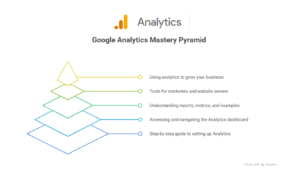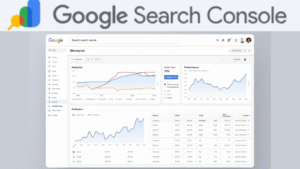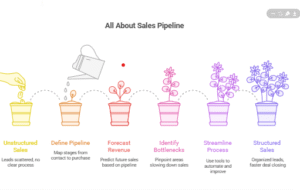Imagine having a beautifully designed website that no one visits — frustrating, right?
That’s where On Page SEO comes in. It’s the process of optimizing the content, structure, and elements within your website to improve visibility on Google and attract the right audience.
According to Backlinko, sites with strong on-page optimization outperform competitors in over 80% of search results.
Whether you’re a marketer, entrepreneur, or digital learner, mastering this On Page SEO Checklist will help you build a website that ranks better, converts faster, and sustains long-term organic traffic.
At kkfreelancer, we’ve helped multiple businesses increase their organic reach through powerful on-page optimization strategies. Let’s break down the essentials you can start applying right now.
What is On Page SEO?
On Page SEO refers to optimizing individual web pages — both their content and HTML source code — to improve search engine rankings.
It ensures that Google clearly understands:
- What your page is about.
- Why it deserves to rank higher.
- How it provides value to users.
Think of On Page SEO as the technical and content-based foundation of your online visibility.
The Ultimate On Page SEO Checklist for 2025
Let’s explore every crucial step, from keyword optimization to user experience, that impacts your rankings.
1. Keyword Research and Mapping
Every successful SEO campaign starts with effective keyword research.
You must know what your audience is searching for — and how to target those phrases naturally.
How to Do It Right
- Use tools like Google Keyword Planner, Ahrefs, or Ubersuggest.
- Focus on search intent — informational, commercial, or transactional.
- Map one primary keyword and 2–3 related secondary keywords per page.
Example:
If your page is about “SEO Services in Pune,” your related keywords could be “best SEO company in Pune” and “affordable SEO agency Pune.”
2. Write SEO-Friendly Titles and Meta Descriptions
Your title tag and meta description are your first impression on Google search results.
They should be keyword-rich, clickable, and value-driven.
Tips:
- Include the main keyword once in the title and meta description.
- Keep the title under 60 characters and description under 160 characters.
- Add a call-to-action (CTA) like “Learn More,” “Discover,” or “Get Started.”
Example:
Title: On Page SEO Checklist – Optimize Your Website for Success
Meta Description: Learn the complete On Page SEO Checklist to boost your Google rankings with kkfreelancer’s proven strategies.
3. Optimize Headings (H1, H2, H3)
Headings improve readability and help Google understand content structure.
- H1: Use your focus keyword once.
- H2, H3: Use related phrases and variations.
- Keep your H1 unique per page.
Example Structure:
- H1: On Page SEO Checklist – A Complete Guide
- H2: What is On Page SEO?
- H2: Step-by-Step Checklist
- H3: Optimize Images, Internal Links, etc.
4. Write Engaging and Valuable Content
Content is still the backbone of SEO.
Google rewards pages that solve user problems and provide unique insights.
Tips for SEO-Optimized Content
- Write 1,500–2,000 words per blog post.
- Include keywords naturally (avoid overstuffing).
- Add statistics, examples, and authoritative references (like Search Engine Journal or Ahrefs Blog).
- Maintain a conversational tone for readability.
5. Optimize URL Structure
Short, clean URLs are easier for users and Google to understand.
Example:
✅ /on-page-seo-checklist
❌ /blog/2025/01/07/guide-to-on-page-seo-checklist
Keep URLs descriptive, lowercase, and keyword-focused.
6. Use Internal and External Linking Smartly
Internal Links:
Help users navigate and share authority between your pages.
Example: Link this guide to kkfreelancer’s SEO Services page and Blog section to enhance relevance.
External Links:
Add credibility by linking to trusted sources like Google, HubSpot, or Moz.
Avoid spammy or irrelevant links.
7. Image Optimization
Images make your content engaging, but unoptimized images slow down your site.
Checklist for Image SEO
- Use descriptive filenames (e.g.,
on-page-seo-guide.jpg). - Add ALT text using relevant keywords.
- Compress images using tools like TinyPNG.
- Use WebP format for faster load times.
8. Improve Page Speed and Core Web Vitals
Google prioritizes websites that load quickly and perform smoothly.
Page speed affects both rankings and user experience.
Actionable Steps:
- Minify CSS, HTML, and JavaScript.
- Use lazy loading for images.
- Enable browser caching.
- Test with Google PageSpeed Insights.
9. Mobile Optimization
Over 60% of Google searches come from mobile devices.
Your website must be fully responsive and easy to navigate.
Checkpoints:
- Use a responsive design that adapts to all screen sizes.
- Avoid intrusive popups.
- Test with Google’s Mobile-Friendly Test Tool.
10. Schema Markup (Structured Data)
Schema markup helps Google understand your page better and increases the chance of rich snippets (like ratings or FAQs) in search results.
Add schema for:
- Articles or Blogs
- Local Businesses
- Reviews
- FAQs
You can use tools like Schema.org or Google’s Structured Data Markup Helper.
11. Content Readability and Formatting
Readable content keeps users engaged longer.
Use short paragraphs, subheadings, and bullet points.
Formatting Tips:
- Keep sentences between 15–20 words.
- Use active voice.
- Include transition words like “however,” “therefore,” and “meanwhile.”
12. Optimize for Voice Search
Voice search optimization is crucial in 2025, as more users rely on smart assistants like Alexa and Siri.
How to Optimize:
- Use conversational keywords and questions.
- Add an FAQ section with short, clear answers.
- Focus on local intent (e.g., “SEO agency near me”).
13. Regularly Update Your Content
SEO isn’t a one-time task.
Regularly updating your pages shows Google that your content is fresh and relevant.
Maintenance Tips:
- Update stats and data every 3–6 months.
- Fix broken links.
- Refresh old blog posts with new keywords and visuals.
Additional SEO Checklists Worth Exploring
While On Page SEO is essential, a complete optimization strategy includes:
- Ai SEO Check List – for automating optimization tasks using AI tools.
- Technical SEO Checklist – ensures your site structure, crawlability, and speed are flawless.
- Off page SEO Checklist – focuses on backlinks, mentions, and external authority building.
Each plays a critical role in improving your overall search visibility and ranking consistency.
On Page SEO Tools You Should Use
| Tool | Purpose |
|---|---|
| Yoast SEO / RankMath | Optimize titles, meta tags, and readability |
| Google Search Console | Monitor indexing and performance |
| Ahrefs / SEMrush | Keyword and backlink analysis |
| Grammarly / Hemingway | Improve writing clarity and grammar |
| PageSpeed Insights | Check page performance |
Conclusion: Perfect Your Website with kkfreelancer
An optimized website isn’t just about ranking — it’s about creating a seamless experience that users and search engines both love.
This On Page SEO Checklist gives you every step to boost visibility, improve engagement, and increase conversions.
At kkfreelancer, we specialize in full-scale SEO solutions that include on-page, off-page, and technical SEO — designed to get measurable business results.
👉 Ready to optimize your website for maximum growth?
Explore our SEO Services page or visit the Blog section for more expert insights.
FAQS On Page SEO Checklist
High-quality, relevant content that satisfies user intent is the most crucial ranking factor.
Every 3–4 months, especially after major Google updates.
Not directly, but they improve click-through rate (CTR), which impacts SEO performance.
Balance both — keyword optimization gets you visibility, but user experience retains traffic.
On Page SEO optimizes internal elements like content and code, while Off Page SEO focuses on external signals like backlinks.





